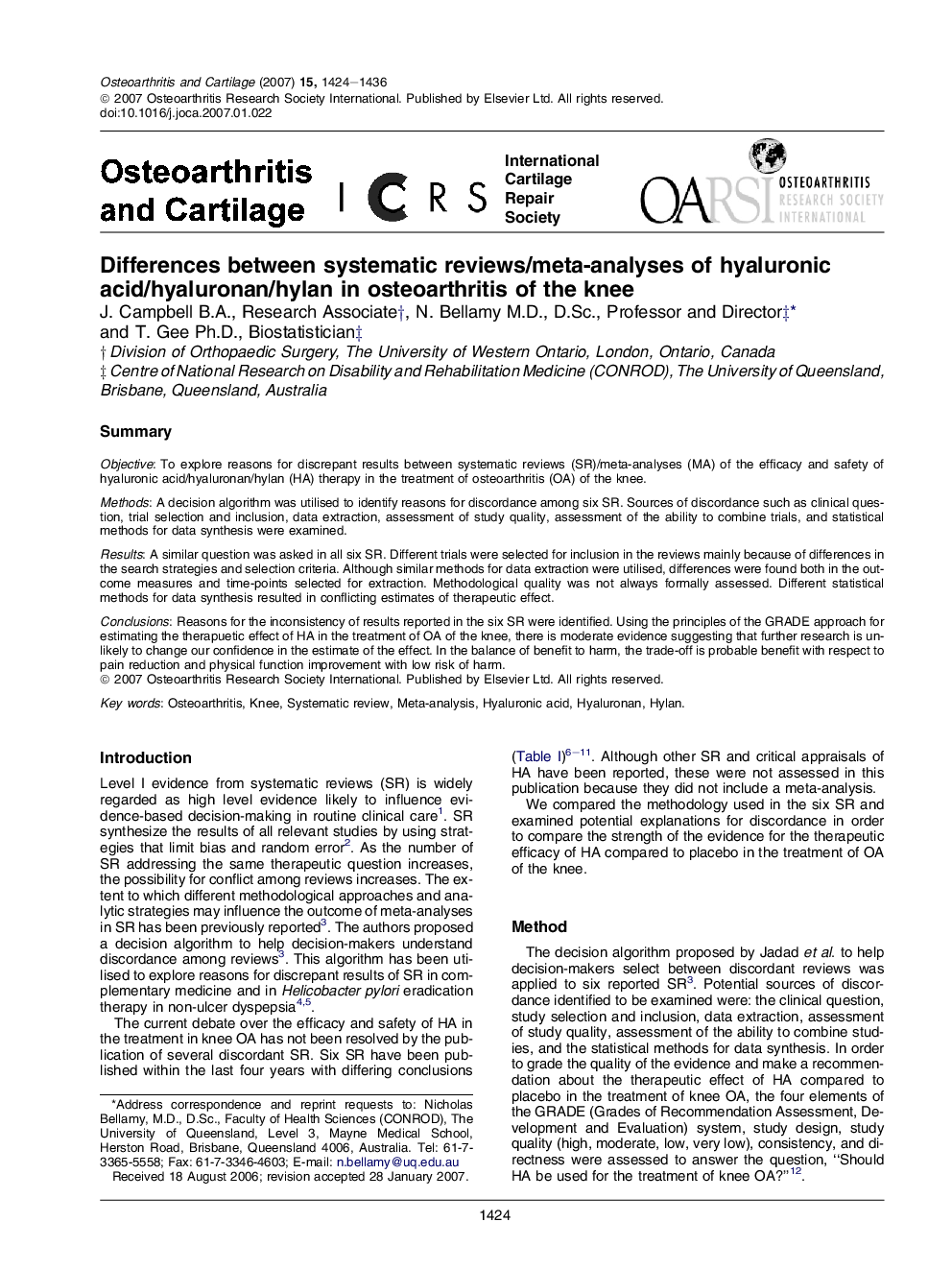| Article ID | Journal | Published Year | Pages | File Type |
|---|---|---|---|---|
| 3381770 | Osteoarthritis and Cartilage | 2007 | 13 Pages |
SummaryObjectiveTo explore reasons for discrepant results between systematic reviews (SR)/meta-analyses (MA) of the efficacy and safety of hyaluronic acid/hyaluronan/hylan (HA) therapy in the treatment of osteoarthritis (OA) of the knee.MethodsA decision algorithm was utilised to identify reasons for discordance among six SR. Sources of discordance such as clinical question, trial selection and inclusion, data extraction, assessment of study quality, assessment of the ability to combine trials, and statistical methods for data synthesis were examined.ResultsA similar question was asked in all six SR. Different trials were selected for inclusion in the reviews mainly because of differences in the search strategies and selection criteria. Although similar methods for data extraction were utilised, differences were found both in the outcome measures and time-points selected for extraction. Methodological quality was not always formally assessed. Different statistical methods for data synthesis resulted in conflicting estimates of therapeutic effect.ConclusionsReasons for the inconsistency of results reported in the six SR were identified. Using the principles of the GRADE approach for estimating the therapuetic effect of HA in the treatment of OA of the knee, there is moderate evidence suggesting that further research is unlikely to change our confidence in the estimate of the effect. In the balance of benefit to harm, the trade-off is probable benefit with respect to pain reduction and physical function improvement with low risk of harm.
